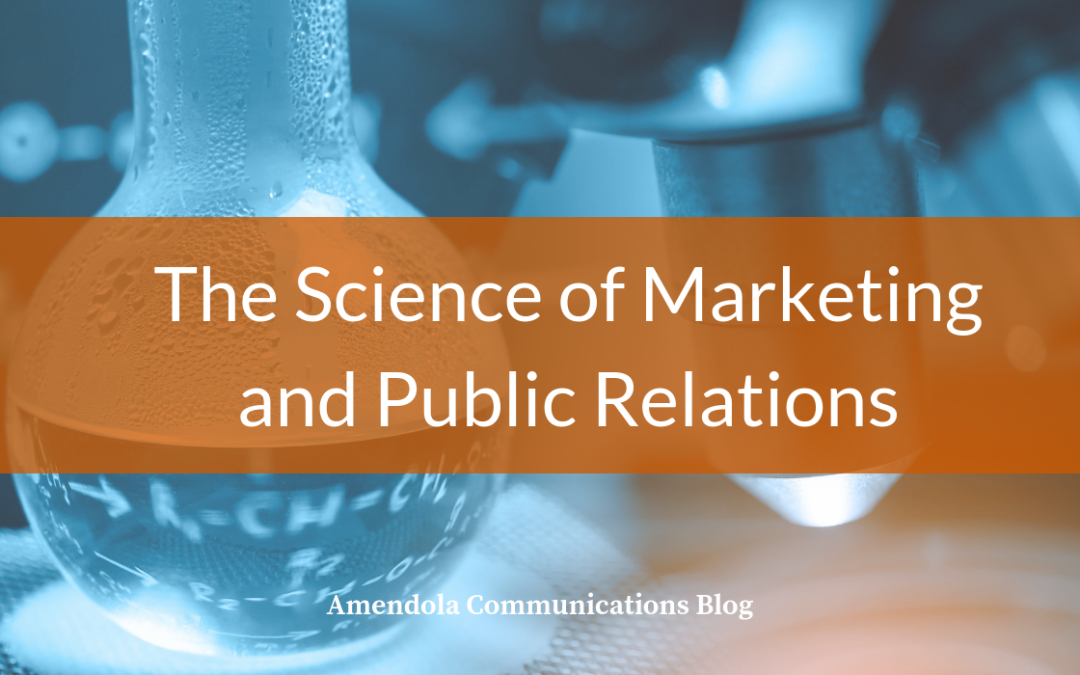
The Science of Marketing and Public Relations
You got approval for a $3 million marketing budget from the C-suite.
While that may sound small to some and exorbitant to others the one guarantee is the marketing team will be required to “prove their value” after the money is spent.
Unlike some other departments who can say we bought 100 widgets at $1 instead of $2 saving the company $100 as marketing has grown more complex over the years, it has also become more difficult to show the return on investment at the end of the day.
But, we all know that saying “it’s difficult to measure” or even worse “we don’t know what value we got from that byline or advertisement” is not an acceptable response to leadership. The C-Suite, rightly so, wants to understand what they are getting for their money. Likewise, we wouldn’t pay thousands of dollars on a car without expecting it to work every day and last for several years. We want to know we got our money’s worth.
Marketers and public relations experts must learn the data and science of the profession. So, how do you measure a byline, a press release, an email campaign, social media, or an advertisement?
Step 1: Know the goals
Do not skip this step! Before embarking on an extensive marketing strategy that the team spent weeks putting together, know your company goals. What are leadership’s short-term and long-term plans? Is it a start-up needing more brand recognition or is it in a growth-stage needing quality lead generation?
Understanding where the company is today and where leadership is heading will help drive your marketing strategy. Share your marketing plans with the leadership team to get buy-in and agree upfront on the metrics that you plan to measure.
Step 2: Set the metrics and know the terminology
Now that you know the goals, it’s time to set your success metrics. How will you know if your plan is successful? Depending upon your strategy, you will use varying measures for different tactics. Below is a subset to consider.
Share of Voice (SOV): Measure the percentage of coverage and mentions of your brand in the media compared to your competitors.
Coverage: Track the number of times your brand is mentioned in the media along with where it is mentioned.
Website traffic: Google Analytics is a very useful tool to monitor unique page views, bounce rates, conversion rates, average session duration, and referral sites.
Domain authority: A term coined by Moz your domain authority ranking will compare your overall website, including SEO and keyword rankings, to give you a number 1-100. The higher the number the great authority your site holds within your industry.
Social Media: Track beginning and ending metrics including followers, likes and shares. Determine which content and messaging provides the greatest engagement with your audience.
Impressions and click-thru rates: With advertisements you will want to view not only the number of people that saw your ad but more importantly, how many clicked on your ad.
Conversion ratios: The percentage or ratio of people that clicked on an email, ad, or social content, etc. that then completed a call-to-action. This includes downloading content, completing a form for a demo, and even registering for a webinar.
Open rates and click-thru rates: When delivering emails or drip campaigns, you can monitor their success based upon the number of people that opened the email and the number of people that then clicked on a link within the email.
Cost-per-lead (CPL): To many in leadership, if you start speaking in terms of CPL you’ll be speaking their language. Calculating the costs of your activity divided by the number of leads you gained will give you the CPL.
Marketing qualified lead (MQL): While this one is probably one of the most important, the definition often varies from company to company. Typically, this is a lead that has a business need, understands what you offer, and has an interest in buying your product or service.
The metrics you choose should align appropriately with the tactics you will produce and the goals of your company. Putting these in place upfront will help avoid confusion at the end of the year.
Step 3: Make sure you have the right tools
While many marketers did not get into marketing to become data analysts, the move toward digital marketing requires a successful marketer to understand and use data wisely. Fortunately, many companies have developed tools to help analyze marketing results and prove value. There are many free or relatively inexpensive tools you can use to monitor your metrics.
Most marketers will start with free tools, and depending on the complexity of their business may purchase additional tools. Due to the overwhelming number of tools on the market, make sure you understand exactly what you are getting and any feature restrictions or limitations. In addition, make sure you use all the benefits of your marketing tools. Often you may purchase an email marketing tool without realizing you can also create landing pages, deliver social strategies and even host your webpages.
The key is not to get overwhelmed. Know what you need to measure and select the tools that are right for you.
